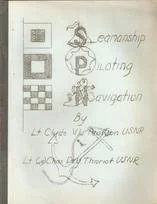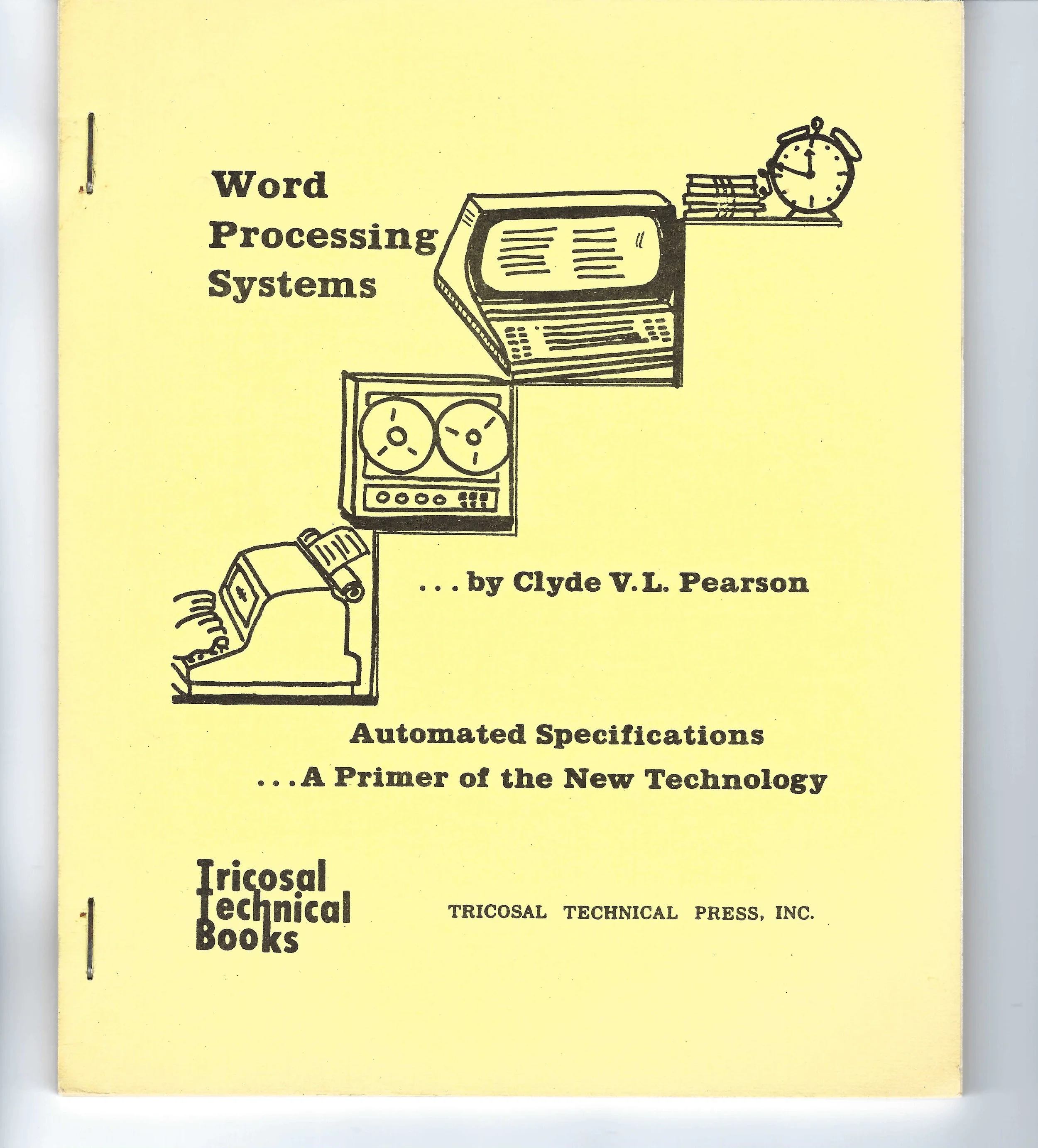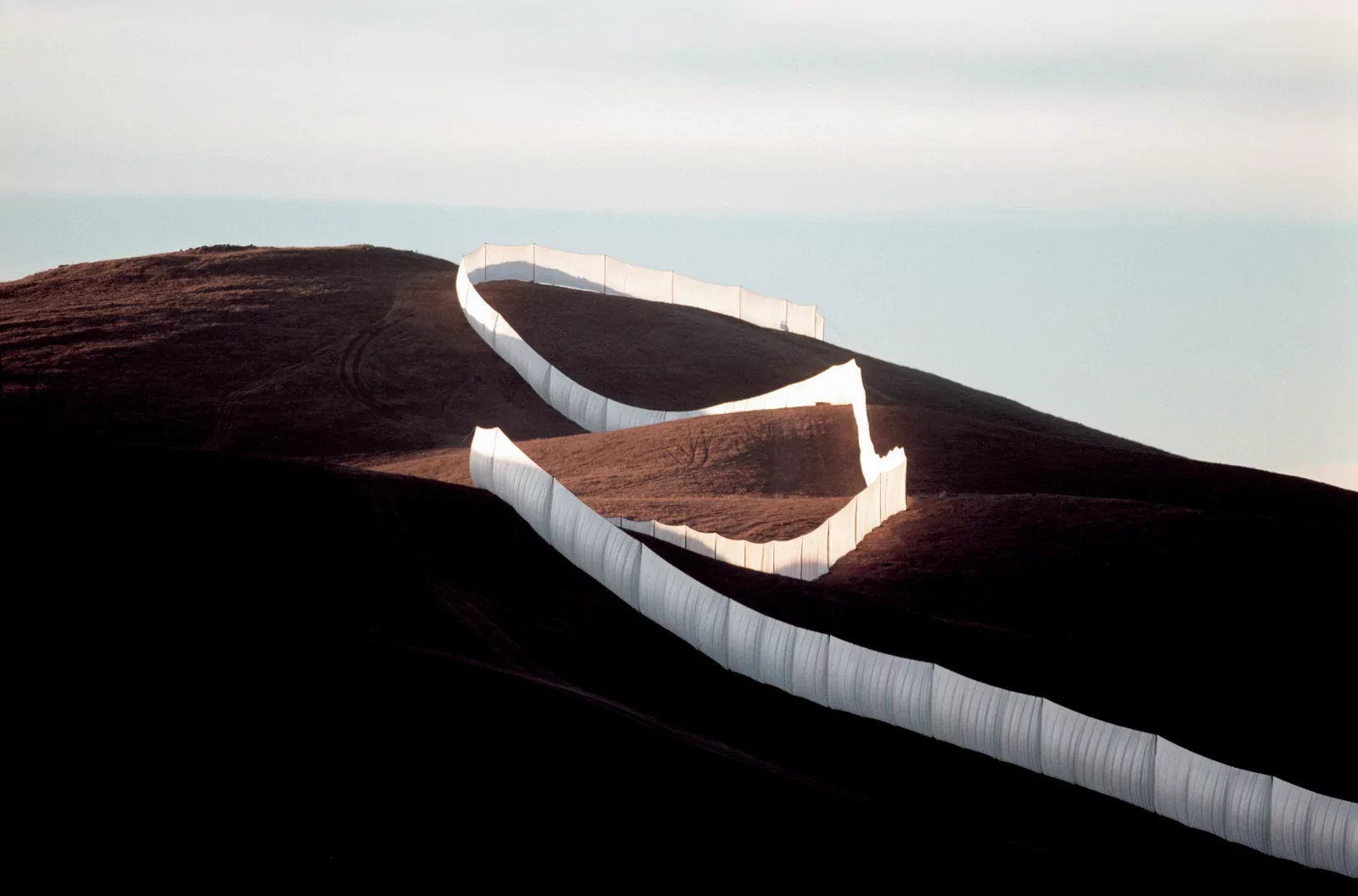Clyde V. L. Pearson, FCSI
This is a reprise of an article originally posted by Marjanne Pearson on February 1, 2011, and updated in February 2025.
My father, Clyde V. L. Pearson, would have been 100 years old in 2012. He was born on February 1, 1912, and unfortunately, he passed away in 1977, at the age of 65
His mother Maude was part of a large family headed by her father Walter John (W.J.) Lindsay, who was born in the Utah Territory in 1863, His mother and her family had emigrated from Scotland with her family and had joined a wagon train bound for Salt Lake City. His father came from St. Joseph MO — where the wagon trains began their trek. He was bringing a wagon-load of household goods to sell to the settlers in Utah and invited the Scottish lassie to ride with him on his wagon, rather than walking like most of the other pioneers. They were married when they got to Salt Lake City, but then he turned around to go back for more goods and was never seen again.
The Civil War ended in 1865, and W.J. grew up during a period of great expansion in the West. He was a cowboy and then developed into a successful businessman, building the Lindsay Land and Livestock Company in Eden, Utah. He and his wife Adelaide had five children, but then she died after giving birth to her sixth child. A few years later, W.J. married Adelaide’s cousin, whom the children called Aunt Annie, and they had six more children, making a very large family.
One day, sometime around 1910, Maude opened the door of their home to a handsome young man who had seen sparks from a train engine set fire to a Lindsay wheat field. They said it was love at first sight, and soon Maude and Vance Pearson decided to marry. Maude was close to her brother, Clyde, who was also engaged, so they had a double-wedding in Salt Lake City and a double-honeymoon in Yellowstone Park. My father was born in 1912 and named for Maude’s favorite brother.
» As a sidenote, my father always thought that his name was Clyde Lindsay Pearson (named for his Uncle Clyde Lindsay), but when he got his birth certificate as an adult, it said his name was Vance Lindsay Pearson (named for his father + his mother’s family). Not wanting to chose between them, from that time forward, he used ‘Clyde Vance Lindsay Pearson’ as his full name. (LIke my father — my full name is Margery Anne Pearson, but after adopting ‘Marjanne,’ I added Vance as my middle name, in his honor.)
When my father was still a baby, Maude and Vance moved to Oregon, where Vance worked as an electrician with Oregon Power and Light. This was at a time that less than 25% of America was using electricity. Another son, Arlo, was born in 1917.
The Roaring Twenties
In 1922, W.J. Lindsay lost control of his Utah holdings to a devious partner, so he rallied the family around him and proposed a move to California. In December, almost the entire Lindsay clan, including Maude and Vance, moved to Mountain View, California, in what is now Silicon Valley. (His Uncle Clyde Lindsay took a job with the U.S. Department of Agriculture in Washington DC, and that line of the family grew up on the East Coast. See the footnotes for information about my cousin, Cat Lindsay, a wonderful interior designer who lives in NYC.)
Lindsay Lifetime Homes • San Francisco CA
They purchased a few lots, and everyone, including W.J., donned carpenter’s overalls and started building homes. Soon, The Lindsay Construction Company was building homes in San Francisco, allowing W.J. to go back to his first love, livestock. He bought a truck and became a stock buyer, buying and marketing lambs, hogs, and cattle, setting up a hog-feeding outfit at Valley Ford in Marin County.
» Coincidentally, Marjanne moved to Sonoma County in 2008, and now lives about 20 miles southeast of Valley Ford.
My grandfather, Vance Pearson, wanted to have his own business, so in the late-1920’s, he borrowed from the Bank of America and started to build homes on his own, with my father working alongside him. My father worked at other jobs, too, including a part-time job with an interior decorator. In 1928, my father’s second brother Dale was born.
Unfortunately, during the 1930’s Depression, my grandfather defaulted on his loan and lost his business. He was able to get a job with Pacific Gas & Electric as an engineer and plant operator and worked with them for the rest of his career. My father had been active in the Boy Scouts, and he began work as a professional leader. In addition, he joined the U.S. Naval Reserve, and he was able to combine his love for the sea with his devotion to Scouting by working with the Sea Scout program. Because he had so much construction experience, he was also asked to build and maintain scout camps.
In the 1920’s, my mother’s family had moved from Salt Lake City to San Francisco, and my mother and father met at a church dance. (My mother said it was also love at first sight — something about those Pearson men’s blue eyes, I think.) They were married in 1935, and in 1938, the Boy Scouts asked my father to move to Santa Monica to run the Sea Scout program and be responsible for construction of the Camp Emerald Bay on Catalina Island.
The Winds of War
My sister was born in Santa Monica in 1939, but then the Boy Scouts again asked my father to relocate, this time to Ely, Nevada. The family lived there until December 1941. On December 7, when my father learned about the attack on Pearl Harbor, he knew that he would be called to active duty, and he immediately left for San Francisco, leaving my mother to pack up the house and then get herself and my sister to San Francisco, to live with her parents. (When I was growing up, my mother was terrified of driving, and I can’t imagine what she went through on that long trip, especially since there were rumors that the Japanese Navy would attack the West Coast.)
Seamanship • Piloting • Navigation
My father had grown up in San Francisco, and because he was in the U.S. Naval Reserve, he had regular duty training on the Treasure Island Naval Base.
After Pearl Harbor, he reported to Treasure Island as a Lieutenant, USNR. Because of his long experience with Sea Scouting and sailing, he was asked to evaluate training methods for “the young Naval Reserve Officer and Enlisted Man.”
Through Scouting, he knew Charles de Young Thieriot (the great-grandson of M. H. de Young, who later became the publisher of the San Francisco Chronicle), and together they wrote and published a (hand-typed, mimeographed) manual on “Piloting, Seamanship and Navigation” for the U.S. Naval Training Center (1943).
Image: A copy of the original training manual • 1941
WWII • Somewhere in the South Pacific
After leaving the Training Center, my 29yo father was assigned to the Pacific Theatre of War, as a Lt. Commander responsible for a flotilla of LSTs.
He was actively involved in invasion after invasion throughout the South Pacific. It could take hours to launch the landing craft with troops and tanks directly onto beaches with no docks or piers, often when they were in battle situations.
One of his main goals was to find ways to reduce the launching time for the LSTs, which could take hours. He engineered a process that reduced the time substantially and received a commendation from the Secretary of the Navy.
He was also awarded a Purple Heart.
R&R • War Bonds Shows + Undercover Agent
My father had many stories about the war, and although we asked him to write a book, he never did. We know that for R&R, rather than going to Australia or Hawaii, my father was sent to Chicago to stage mock-invasions on Lake Michigan for war-bonds shows. (My father loved Big Band Music, so this was a labor of love.) There was enough time for my mother (who had sung with big bands on radio) to take the train to meet him, and they were together for a week before my father was reassigned. In addition, my father was also sent on an undercover assignment to investigate a commanding officer who was mistreating the officers under his command. (My father said it was like Captain Queeg in Caine Mutiny, which Herman Wouk wrote in 1951, after also serving in the USNR in the Pacific Theatre during WWII.)
Peacetime + The Cold War
When my father returned from the war, my mother and sister were living with her parents and sister in San Francisco. His parents had died during the war. His brother, Arlo, had died in a tragic swimming accident before the war, and his brother Dale (a teenager) was living with Lindsay relatives in the Palo Alto area. My father rejoined the Boy Scouts and was assigned to Stockton, California. He and Dale went there to build a house for us. My mother and sister joined them, and then I was born. A few years later, my maternal grandmother died, and my mother was concerned about her father living alone in San Francisco. The Boy Scouts agreed to transfer my father to the SF Council, where he was the Assistant Executive, responsible for the Sea Scouts, construction of camps, and fund-raising.
In the mid-1960s, the Boy Scouts asked my father to move to Germany, to be Chief Executive of Europe. It was a wonderful opportunity. We would have lived on an Air Force Base in Germany, and my sister would have gone to the University of Heidelberg. But there was a dark side, too — my father spoke with his USNR officers, and since we were in ‘the Cold War’ with Russia, they wanted him to obtain intelligence on behalf of the USA — undercover again. Although he was a very patriotic American military officer, my parents decided that we would remain in SF, living with my maternal grandfather.
A New Career Path
That was an inflection point for my father. He was growing restless in his job with the Boy Scouts, and he decided to go into the construction industry (like his father and the rest of the Lindsay family). He joined Bode Gravel (see p11 of the PDF), a ready-mix concrete company, as a safety engineer. After a few years, he bought the rights to a concrete admixture (Tricosal) and went into business with a partner who had a concrete sealant (Proco). My father and his partner would call on architects and engineers to try to get them to specify their products, and he would come home at night and “mix mud,” trying to make an admixture with higher tensile strength (psi).
That was also a time when the City was looking at the Palace of Fine Arts, which had been created during the Panama-Pacific International Exposition of 1915 — “that gave the city a chance to celebrate the construction of the Panama Canal, as well as SF’s recovery from the 1906 earthquake.” It was designed by Bernard Maybeck and built as a temporary exhibition space. Like the other buildings, it was made out of Plaster of Paris. By the mid 1960s, it was disintegrating. My father joined a number of civic leaders who wanted to reconstruct it, and the decision was made to replicate it with poured-in-place concrete. And they used Tricosal as the admixture! My father was so proud that he had been able to contribute to the effort.
He joined the Construction Specifications Institute (CSI), which was another inflection point. In the 1930s, my father had been a reporter on radio, and he with a new opportunity, he began writing professionally, taking on the pro bono role of Editor for the San Francisco Chapter of CSI. He was also tapped to join the Editorial Board of The Construction Specifier, a peer-reviewed publication that was the official journal of the Construction Specifications Institute, with other luminaries in the A/E/C industry, including George Heery.
He became interested in computers, and in 1966, when architects and engineers were still typing specifications (and using the new invention of liquid “White Out” to make corrections), he convinced two specifications writers (Herman Hoyer and Tom Hubbard) to join him in creating a new computer-based specification system, which was endorsed by CSI and became known as “COMSPEC” in 1971. His collaborators were elevated to Fellowship in CSI — Tom Hubbard in 1970, and Herman Hoyer in 1971.
A Primer of the New Technology
My father established his own publishing company, Tricosal Technical Press, Inc., and wrote many technical articles, including “Automated Systems Study, 1968” and “The Basic Functions of Digital Computers, 1971,” as well other works in the field of computer applications.
In 1971, he received the Citation of the Construction Specifications Institute for his work in automated specifications, and he received the Institute President’s Plaque for his creative leadership.
And in 1972, he was elevated to Fellowship in the Construction Specifications Institute, which was a great honor for him — especially because the Institute also changed his membership status from ‘Industry’ to ‘Professional.’
Image: The first-generation of automated specifications • ©1970
As he grew older, my father wanted to once again contribute his knowledge for subsequent generations, and he became the Executive Director of the California Industrial Education Association (now known as the California Industrial and Technology Education Association, or CITEA), a position that he thoroughly enjoyed for the rest of his life.
A Long Line of Makers
A friend commented on Twitter that her grandfathers were “makers” (or tinkerers). I come from a long line of “makers” as well. My grandfather was an electrician in the very early days of that industry. My father was always creating something, or trying to make it work better. In addition, since my father worked with men and boys, he thought that his two daughters should be “handy,” so I grew up putting things together. I developed a love of building and buildings from him and all of the Lindsays who were involved in construction. (Although the home builders weren’t always very complimentary about architects.)
As I look back on my own life, it’s no wonder that I found a career in the architectural industry, combining my love of buildings with talent management, marketing, and organizational strategy, as well as writing and teaching. After all, it’s in my genes.
Thanks, Daddy. And Happy Birthday!
Treasure Island in the Mid-1950s
After WWII, my father, Commander Clyde V. L. Pearson, USNR, did his monthly reserve duty as XO (Executive Officer) for a weekend at Treasure Island Naval Base, San Francisco.
It was always great to visit him there. We’d wear our Sunday best because we’d have dinner at the Officers’ Club. It had a big television, and we could watch The Wonderful World of Disney in color!
Image: Daddy with my mother, teenage sister Judy, and me, c. 1954.
We apologize for the image quality. This was originally published in 2011, when website images had to be small. We’re in the process of re-scanning all of the original sources.
NOTES
My cousin, Cat Lindsay, the great-granddaughter of my father’s Uncle Clyde (for whom my father was named), is an interior designer in practice with her architect husband John Newman in New York City — Lindsay Newman Architecture. It’s in her genes, too.
My father was 16yo when his brother Dale was born, and Dale was 16 when I was born. He was just 8 years older than my sister. Their parents had died during WWII. He lived with us in Stockton before leaving to study at Brigham Young University (BYU). He served honorably in the US Army during the Korean War and earned multiple degrees (BS, MSW, and PhD) in Psychology and Social Work. He was a distinguished professor at BYU for 26 years and died in 2013 at the age of 85. Although Dale and his family lived in Utah, and we lived in California, they were very close — my father called Dale “Bud” or “Buddy.”
Uncle Dale presided over my father’s memorial in 1977, when we scattered his ashes in the San Francisco Bay, which my father knew so well.
BONUS NOTE
Valley Ford CA is probably better known now as the starting point for Christo’s Running Fence art installation in 1976.
Thank you so much for visiting! We look forward to your stories, too.
⇢ Scroll down to the footer and say hello!








